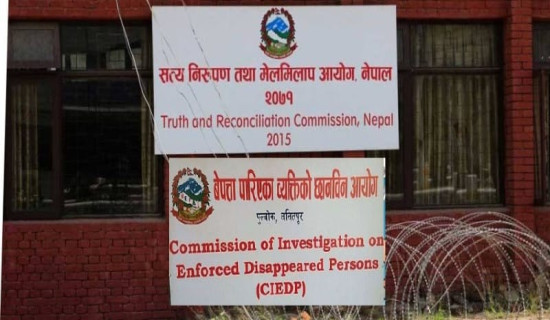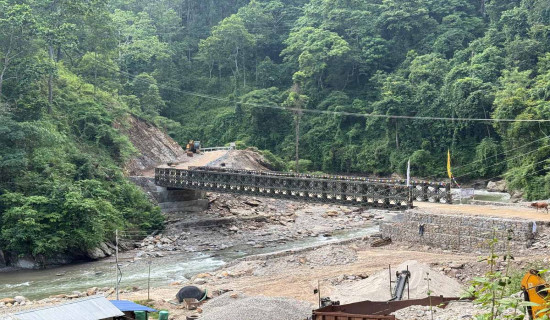- Saturday, 2 August 2025
Restoration of Saptapatal Pokhari underway
By Binu Shrestha,Kathmandu, June 30: Anyone passing through Lagankhel Bus Park toward the Batuk Bhairav temple in Lalitpur can now see a group of workers actively restoring the historic Saptapatal Pokhari (pond). Bricklayers can be seen working on both the surrounding walls and the centre of the pond, following a traditional design that involves layering sand and sticky black soil beneath the bricks.
Every day, around 15 to 20 labourers are engaged in reviving the Lichhavi-era pond, which holds immense religious, cultural and historical value.
After 15 years of legal struggle, the long-awaited restoration of Saptapatal Pokhari has finally reached the last phase of revival. The pond, closely associated with the Rato Machhindranath festival, had nearly lost its identity due to encroachment by local Namuna Machhindra Secondary School. Now, through the continued efforts of locals, it is being revived.
The Saptapatal Pokhari Consumer Committee, operating under the Lalitpur Metropolitan City (LMC), is leading the restoration. According to Labha Karki, an engineer at LMC, a Detailed Project Report (DPR) of Saptapatal Pokhari, which also includes the nearby Paleswan Pukhu (Nepal Bhasa: Kamal Pokhari), was prepared at a cost of Rs. 240 million.
Located in Ward No. 15, the existence of Saptapatal Pokhari had been under threat due to the construction of a commercial complex by the school on the pond’s northern part and opened an alternate road from the western side.
The Supreme Court’s ruling on June 18, 2019, determined that the land where the pond is located did not belong to the school. Kiran Sthapit, currently acting in place of his father and committee chairperson Purna Sthapit, explained that his father had initiated the legal case in 2004 to stop the encroachment. The court’s verdict mandated the removal of illegal structures and returned the land to its original purpose, paving the way for restoration.
Following this, the LMC constructed a transparent fence around Saptapatal and Paleswan Pukhu, near Ashok Stupa, at a cost of Rs. 50 million. While this construction was managed through a contract, the revival of the Saptapatal Pokhari has been entrusted to the consumer committee.
The revival officially began in fiscal year 2023/24 with a budget of Rs. 9.9 million and continued in the fiscal year 2024/25 with an equal budget in the second phase. The second phase concluded on June 29. As part of the work, around 10 feet of mud was removed. The pond’s surrounding walls are being reconstructed with sloped walls to make them suitable for aquatic life.
The pond’s base is layered traditionally: four inches of sand, 10 inches of black soil, followed by bricks.
According to Sthapit, around 14 ropanis and 10 annas of Saptapatal Pokhari land is expected to be fully restored within the next 15 to 20 days. A third phase is expected to extend the timeline by an additional few months.
Meanwhile, Paleswan Pukhu, covering approximately 33 ropanis, is also under restoration through a tender process, as per a Memorandum of Understanding (MoU) signed with the Rajdal Battalion, as the pond falls within its boundary.
LMC plans to plant lotus flowers in Paleswan Pukhu once restoration is complete, enhancing its aesthetic value.
The cultural significance of Saptapatal Pokhari was once again demonstrated on June 21, when a ritual involving the release of fish into the pond was performed, marking the final ceremony of the Rato Machhindranath festival. This symbolic act is believed to send a message to the earthly realm (Martya Loka) that the festival has successfully concluded. Earlier that morning, the Panju (priest) of Minnath conducted a yagya near Batuk Bhairav and released a pair of fragile fish to deliver a message to the heavenly realm (Swarga Loka), he said.
As part of future development plans, LMC aims to develop gardens, a traditional inn, and walkways around the pond while maintaining its natural beauty and religious, historical, and traditional significance.





-square-thumb.jpg)
-original-thumb.jpg)










